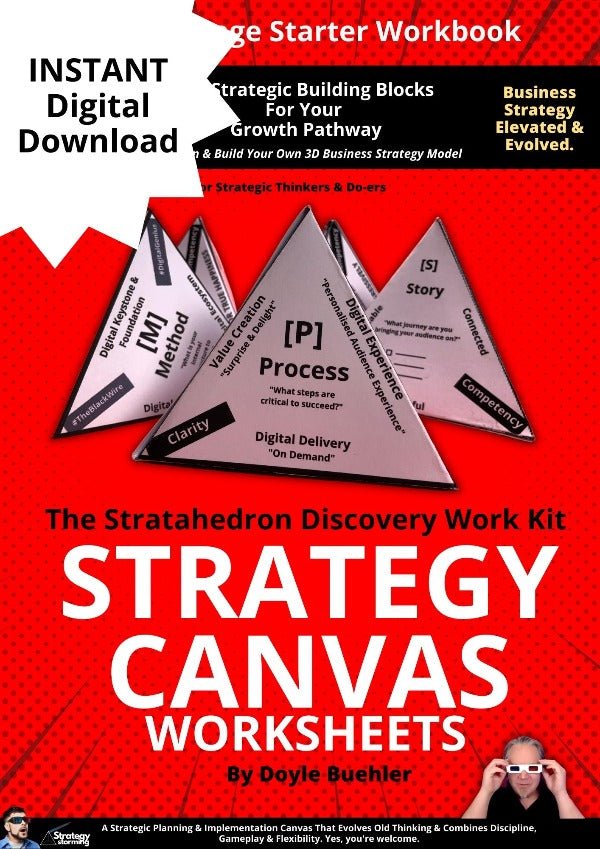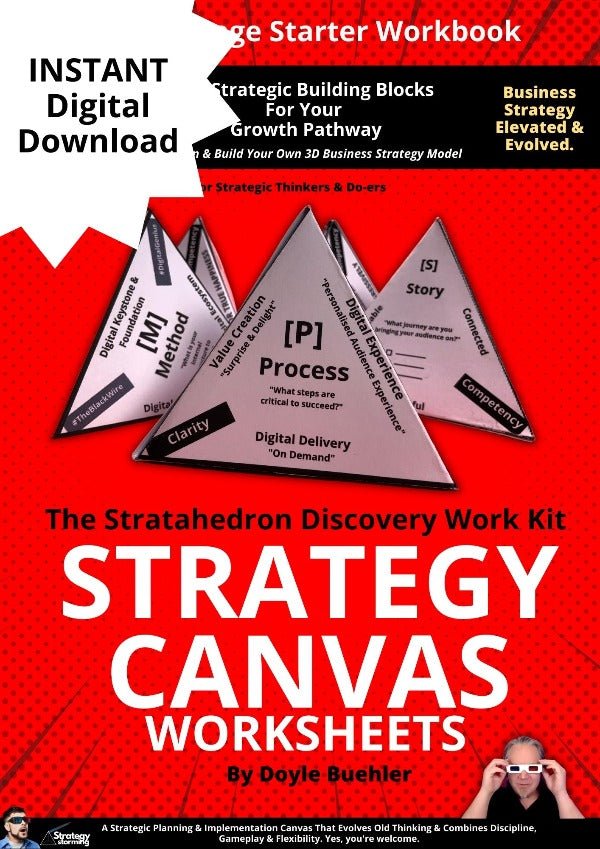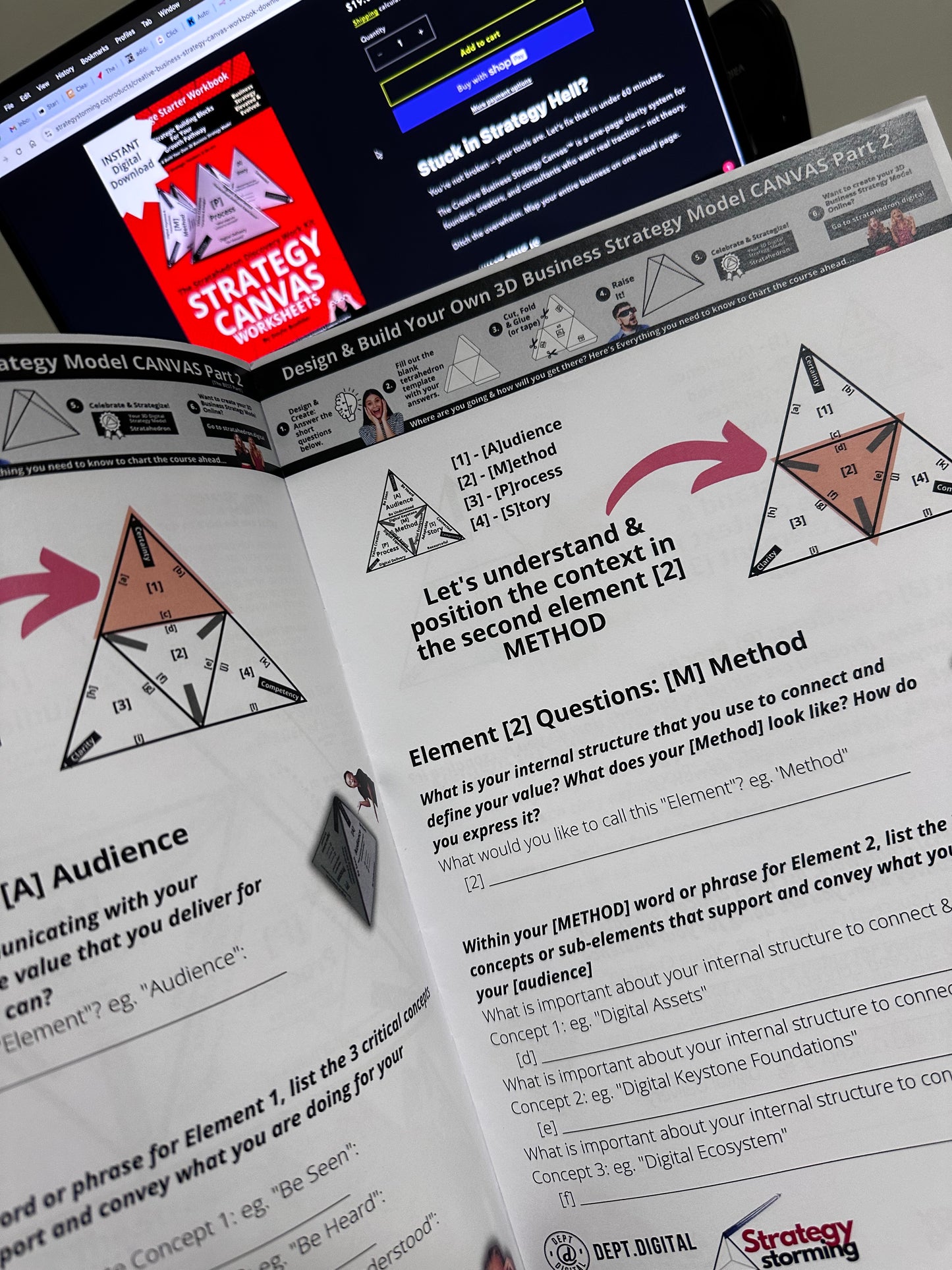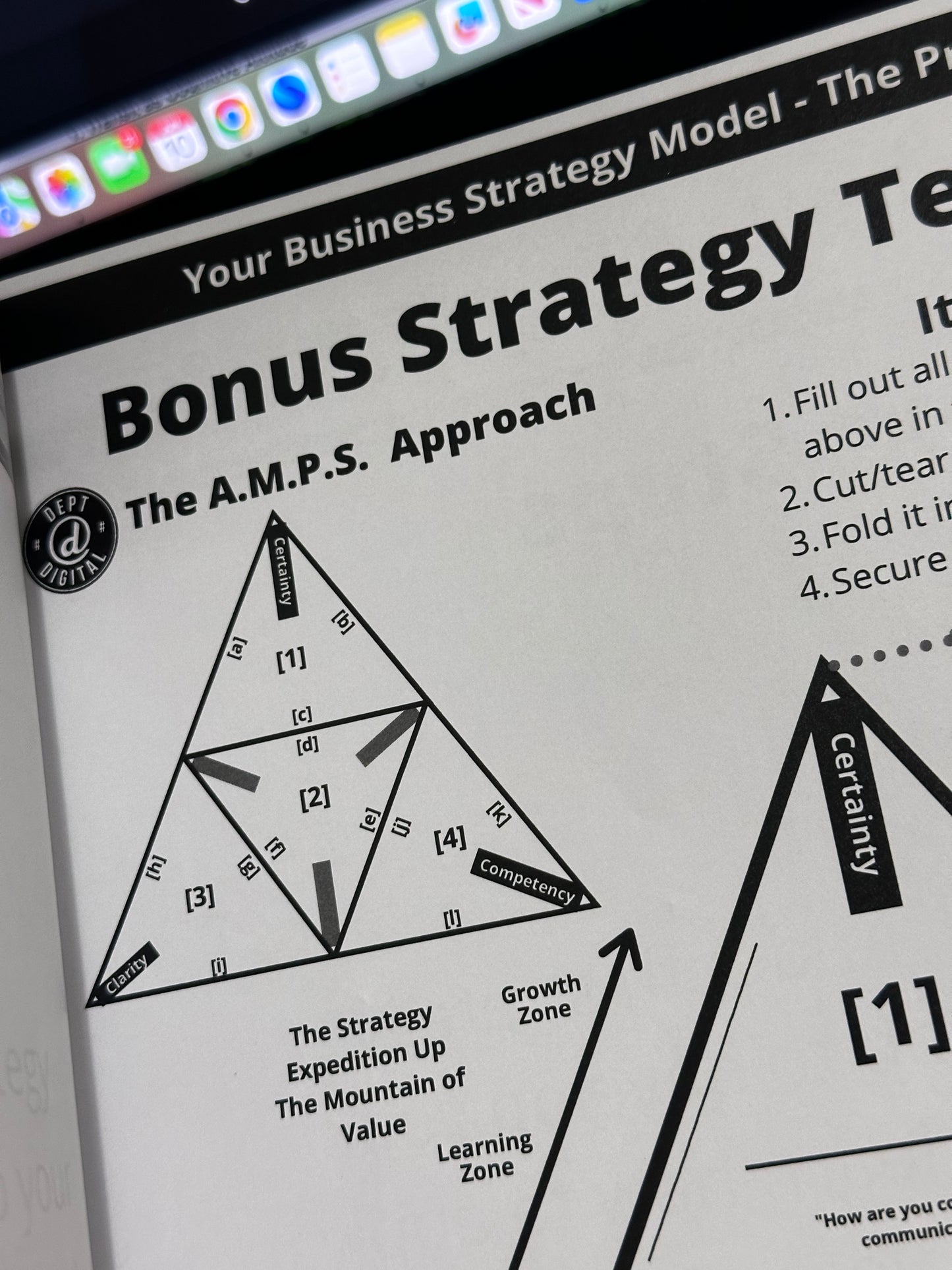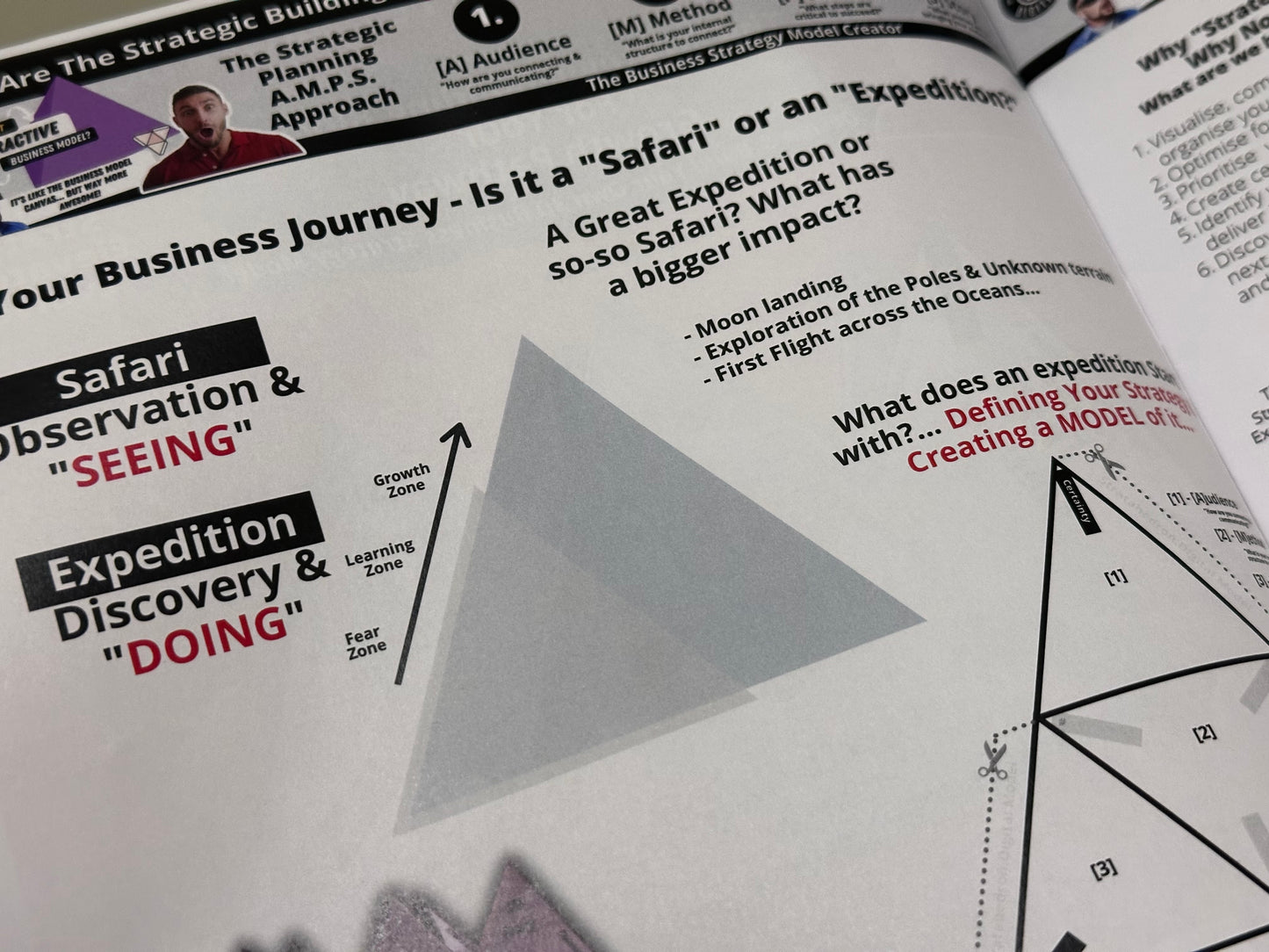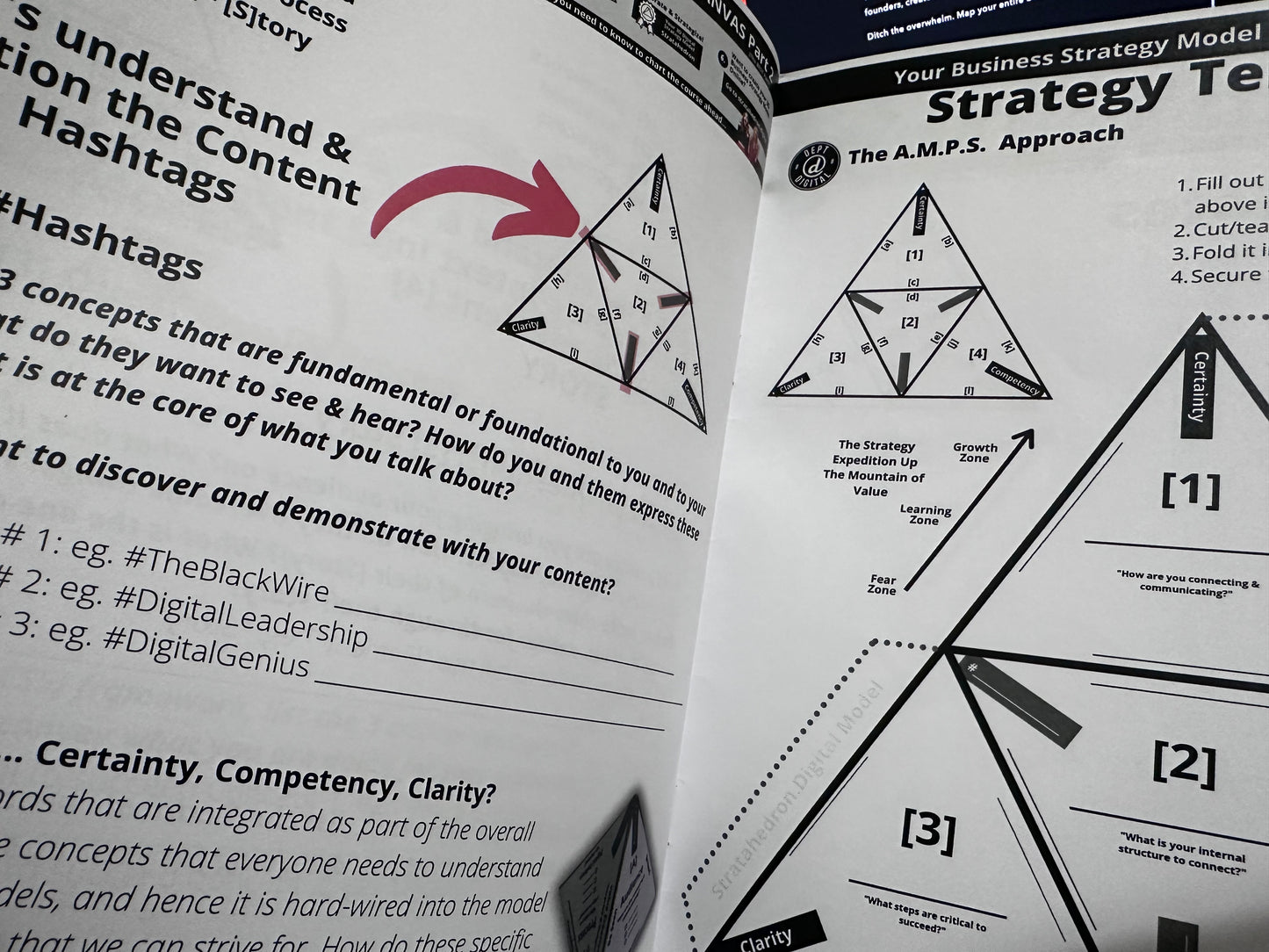
How to Use Strategy to Improve Growth - A Definitive Guide
Share
Your Guidebook on How to Use Strategy to Improve Growth
In today's fast-paced business landscape, having a well-thought-out strategy is essential for any organization that wants to achieve long-term success and sustain growth. Whether you're a startup looking to establish your brand or an established company aiming to expand into new markets, strategic planning will be your secret weapon. In this article, we will delve into the importance of strategic planning, the key elements of a successful growth strategy, how to develop and implement it, and how to measure its success.
Understanding the Importance of Strategic Planning
Before diving into the nitty-gritty of strategic planning, let's first define what it actually means in the context of business.
Strategic planning is a fundamental process that businesses undertake to ensure their long-term success. It involves a systematic approach to setting clear objectives, identifying the actions required to achieve those objectives, and allocating resources to execute those actions. This process serves as a roadmap that guides the decision-making process of an organization towards achieving its long-term goals.
Now, let's delve deeper into the concept of strategic planning and explore its various aspects.
Defining Strategic Planning in Business
Strategic planning is not just a one-time activity; it is an ongoing process that requires continuous evaluation and adaptation. It involves analyzing the internal and external environment of a business, understanding market trends, and identifying potential risks and opportunities. By doing so, businesses can develop a comprehensive strategy that aligns with their vision and helps them stay ahead of the competition.
Furthermore, strategic planning involves setting specific, measurable, achievable, relevant, and time-bound (SMART) objectives. These objectives provide a clear direction for the organization and serve as a benchmark for measuring success.
Get your Free Strategic Planning Checklist
The Role of Strategy in Business Growth
A well-crafted strategy plays a crucial role in driving business growth. It helps align the entire organization by clearly defining its purpose, vision, and values. By establishing a shared understanding of the organization's direction, strategy fosters a sense of unity and collaboration among employees.
Moreover, strategy enables businesses to identify and prioritize opportunities. By conducting a thorough analysis of the market and competitive landscape, organizations can identify gaps in the market and develop innovative solutions to meet customer needs. This proactive approach to identifying opportunities allows businesses to stay ahead of the curve and gain a competitive advantage.
Additionally, strategy helps businesses make well-informed decisions. By considering various factors such as market conditions, customer preferences, and resource availability, organizations can make strategic choices that maximize their chances of success. This analytical approach to decision-making minimizes the risk of making hasty or ill-informed decisions.
Lastly, strategy enables businesses to effectively allocate resources to achieve sustainable growth. By aligning resources with strategic priorities, organizations can optimize their operations and ensure that resources are utilized efficiently. This disciplined approach to resource allocation helps businesses avoid wasteful spending and focus on activities that drive long-term value.

Strategic planning is a vital process that businesses must undertake to ensure their long-term success. By defining clear objectives, identifying the actions required to achieve those objectives, and allocating resources effectively, organizations can develop a comprehensive strategy that drives growth and helps them stay ahead in a competitive business landscape.
Key Elements of a Successful Growth Strategy
Now that we understand the importance of strategic planning, let's explore the key elements that contribute to a successful growth strategy.
A successful growth strategy is crucial for any business looking to expand and thrive in a competitive market. It requires careful planning, analysis, and execution. By incorporating the following key elements into your growth strategy, you can increase your chances of achieving sustainable growth and success.
Get your Free Strategic Planning Checklist
Setting Clear Business Goals
Every growth strategy begins with setting clear and measurable business goals. These goals should be specific, achievable, relevant, and time-bound. By having well-defined objectives, you provide your team with a clear direction and a sense of purpose, which leads to improved performance and growth.
When setting your business goals, it is important to consider both short-term and long-term objectives. Short-term goals help you track progress and stay motivated, while long-term goals provide a vision for the future and guide your overall growth strategy.
Furthermore, it is essential to align your business goals with your company's mission and values. This ensures that your growth strategy is in line with your core principles and helps build a strong and cohesive organizational culture.
Identifying Your Target Market
Understanding your target market is essential for developing an effective growth strategy. By identifying who your ideal customers are, their needs, and their preferences, you can tailor your products or services to better meet their expectations. This customer-centric approach will help you differentiate yourself from the competition and attract more customers.
When identifying your target market, it is important to conduct thorough market research. This involves analyzing demographic data, consumer behavior patterns, and market trends. By gaining insights into your target audience, you can identify untapped market segments, discover new opportunities, and develop targeted marketing campaigns.
Additionally, it is crucial to continuously monitor and evaluate your target market. Consumer preferences and market dynamics can change rapidly, so staying updated with the latest trends and shifts in demand is essential for sustaining growth and remaining competitive.
Analyzing Your Competition
No growth strategy is complete without analyzing the competitive landscape. By keeping a close eye on your competitors, you can identify their strengths and weaknesses, anticipate their moves, and find opportunities to outperform them. This competitive intelligence will allow you to develop strategies that give you a competitive edge and sustain your growth.

When analyzing your competition, it is important to consider both direct and indirect competitors. Direct competitors offer similar products or services to the same target market, while indirect competitors may provide alternative solutions or cater to a slightly different customer base. By understanding the strengths and weaknesses of both types of competitors, you can position your business strategically and differentiate yourself in the market.
Furthermore, analyzing your competition involves studying their marketing strategies, pricing models, customer satisfaction levels, and overall market share. This information can help you identify gaps in the market, areas for improvement, and potential partnerships or collaborations that can drive growth.
Remember, competition should not be viewed as a threat, but rather as an opportunity for growth and innovation. By learning from your competitors and adapting your strategies accordingly, you can stay ahead of the game and continuously evolve to meet the ever-changing needs of your customers.
Developing a Growth Strategy
Now that we have covered the key elements, let's dive into the process of developing a growth strategy.
Get your Free Strategic Planning Checklist
Steps to Create a Growth Strategy
To create a growth strategy, you need to start by assessing your current situation. Analyze your strengths, weaknesses, opportunities, and threats (SWOT analysis). Based on this assessment, identify the most promising growth opportunities and develop action plans to pursue them. Remember to set specific goals, define metrics to measure your progress, and regularly review and adjust your strategy as necessary.
Incorporating Innovation in Your Strategy
Innovation is the fuel that drives growth. To keep your strategy fresh and adaptable, you must embrace innovation. Encourage creativity within your organization, foster a culture of experimentation, and continuously seek ways to improve your products, processes, and customer experiences.
Aligning Your Strategy with Your Business Vision
A growth strategy that is not aligned with your business vision is like a ship without a compass. Ensure that your growth strategy is in harmony with your long-term vision for the organization. This alignment will keep everyone focused on the same goals and create a sense of purpose that drives sustainable growth.
Implementing Your Growth Strategy
Developing a growth strategy is just the beginning – the real challenge lies in its implementation.
Effective Communication of Your Strategy
For your growth strategy to succeed, it is crucial to effectively communicate it to your team. Clearly convey your goals, action plans, and expectations to ensure everyone is on the same page. Encourage open dialogue, provide regular progress updates, and celebrate small wins along the way to keep your team motivated and engaged.
Monitoring and Adjusting Your Strategy
No strategy is set in stone. To ensure its effectiveness, you must continuously monitor your progress, gather feedback, and make necessary adjustments. Regularly review your metrics and key performance indicators (KPIs), and be prepared to pivot if you encounter unexpected obstacles or opportunities.
Measuring the Success of Your Growth Strategy
Finally, it is crucial to measure and evaluate the success of your growth strategy to gauge its effectiveness and make informed decisions for the future.
Key Performance Indicators for Growth
Identify and track key performance indicators that align with your growth goals. These can include metrics such as revenue growth rate, customer acquisition cost, customer lifetime value, market share, and customer satisfaction. By regularly assessing these KPIs, you can evaluate your progress and make data-driven decisions to optimize your growth strategy.
The Role of Feedback in Strategy Improvement
Feedback is a valuable asset when it comes to refining your growth strategy. Collect feedback from your customers, employees, and stakeholders to gain insights into their experiences and expectations. Utilize this feedback to identify areas for improvement, adapt your strategy as needed, and foster a culture of continuous learning and growth.
Strategy a Dynamic, Ongoing Process
Using strategy to improve growth is not a one-time endeavor but an ongoing process that requires careful planning, execution, and evaluation. By understanding the importance of strategic planning, incorporating key elements, and implementing effective growth strategies, you can steer your organization towards sustainable growth and seize new opportunities. Remember, a well-executed growth strategy is the secret ingredient that sets successful businesses apart from the competition.
Get your Free Strategic Planning Checklist
Related Posts
-

How to Use Strategy to Improve Revenue: A Comprehensive Guide
Finding ways to improve revenue is essential & possible with Strategy
-
![The Entrepreneur Journey is Broken? [Part 1] - Strategystorming - The Strategy Studio & Shop for Strategic Thinkers](//strategystorming.co/cdn/shop/articles/the-entrepreneur-journey-is-broken-part-1-590109.webp?v=1701206679&width=170)
The Entrepreneur Journey is Broken? [Part 1]
What if the Entrepreneur Journey could be different?
-

Creating Certainty in an Uncertain Business Environment with The Business Design Strategy Sprint
-

How do you build a Strategy Operating System?
-

Business Strategy Mastery Workshop - Strategy Masterclass October 2022 Intake - Session Now Closed
Business Strategy Mastery Workshop - Strategy Masterclass October 2022 Intake Now Closed. It's time to rethink & reinvent how we think about strategy, but also how we understand, design, and create it. Get the thinking, tools, and know-how to craft business strategy like never before.
-

8 Simple Questions Every Strategy Must Answer to Be Able to See Your Greatest Competitive Advantage
Your biggest competitive advantage that you can ever have is how you think and how you problem solve better than anyone else, especially in these challenging times.
This is your strategic thinking, only you have it, and your future really does depend on it.
-

Is Business An Art Or More About Science? Hint: It's Neither
👉Being more clever
👉Being more creative
👉Being more skillful
👉Thinking more strategically
👉Reducing complex ideas & problems
👉Crafting uncommon solutions
👉Embracing complexity
-

Is Your Strategy Still Just a Pile of Notes and Guesswork?
The Creative Business Strategy Canvas™ is the clarity tool I built after hitting that wall one too many times.It’s one page. Visual. Brutal. Honest.
It shows you your business — as it actually is — so you can build what it’s meant to be.
-

Reinventing Rapid Business Growth With The Strategy SuperModels
Enter The World of Business Strategy SuperModels - Redefine and Reinvent
-

Unlock Business Growth with The Growth Pathway Strategy GPS SuperModel
Unlock Business Growth with The Growth Pathway Strategy GPS SuperModel
-

4 Strategic Steps to Rethink and Reimagine SWOT Analysis for Your Business
Here's How to Reimagine & Customize your SWOT with a Custom SWOT Analysis Worksheet
-

Reimagining & Reinventing Ikigai for Brand Strategy Design Consultants & Strategists
Exploring Brand Strategy Models & Case Studies In Strategy - The Reimagining of the Ikigai Model - The Strategy Super Model Series
-

Exploring Brand Strategy SuperModels & Case Studies in Strategy
-

FlightPath Day 80 of 100: Rhythm Over Hustle - How Founders don’t burn out from work
-

Want to Obtain Better Business Results in 4 Easy Steps? Keep it Simple - Here's A Really Simple Strategy With BIG Impact
-

10 Must-Haves to Master Your Digital Landscape - The Strategy Playbook
Transform Your Business Online With Clearcut Success Strategies In This Strategy Playbook
-

Do You Want to Lose Track of Your ‘Why’ & ‘How’ amongst all of the ‘WTFs’?
You’ll build out your business journey as your “FlightPath” with a close-knit group using the wisdom of your peers for reimagining your perspective, driving your OWN priorities & finding your OWN critical solutions.
-

How to Use Strategy to Improve Brand Awareness - The Brand Strategy Guide
Here's How to Use Strategy to Improve Your Brand Awareness
-

How to Use Strategy to Improve Market Share: What's Really Important?
How Do You Improve Market Share With Strategy?
-

How to Use Strategy to Improve Innovation - Your Innovation Playbook
Understanding the Connection Between Strategy and Innovation
-

10 Rules of a Strategy-Focussed Entrepreneur That Really Matter
What's really important for a strategy-focussed entrepreneur?
-

10 Rules That Really Matter for a Digital-Focussed Enterprise
Here's 10 simple rules to see if you are a digital-focussed business.
-

10 Invaluable Strategic Business Insights for Today’s Highly Competitive Business Environment.
10 invaluable insights for today’s highly competitive business environment using The Art of War
-

The Strategic Planning Success Blueprint: Navigating the Complex World of Planning With The Strategic Planning Checklist
-

The Annual Strategic Planning Panic Season Has Begun! Ditch the Drama, Embrace the Plan: Less Zigging, More Winning!
Strategic Planning Panic Season. Ditch the Drama, Embrace the Plan: Less Zigging, More Winning!
-

Unlock Your Business Brand Secrets: Master Your Brand & Strategy with the Strategystorming Sprint.
Don't let market disruptions steer you off course; take the helm of your business with unwavering confidence by mastering the art of strategic planning. This is your roadmap to not just surviving but thriving in today's volatile business landscape.
-

Can AI make you MORE Creative, Curious, Innovative AND more strategic? Yes or no?
Can AI make you MORE Creative, Curious, Innovative AND more strategic? Yes or no?
What if it could?
-

What You Think You Already May Know About Cognitive Biases...May Be Wrong
-

A Good Strategic Thinker And A BETTER Strategic Thinker - What's The Difference?
Improve your strategic thinking skills and increase your growth potential.
-

Good Strategy vs Bad Strategy. 5 Simple Symptoms To Identify a Really Bad Strategy.
What are the symptoms and signals that can help diagnose a potentially Good Strategy vs an ineffective Bad strategy?
-

Why Your Strategy Must Not Become A To Do List - The Only 5 Strategic Questions You Cannot Exist Without
By taking the time to answer these questions, you can develop a clear understanding of your company's purpose, its big idea, and how you're going to deliver value to your customers. This will help you to stay focused and on track as you build your business.
-

IMPACT: What would you actually do if you had more of it for your business?
Here's how to find and start to build your impact that lasts with digital strategy
-

The Business Top Gun's Playbook: Harnessing Speed of Strategy and Strategic Direction for Navigation for Impact
-

Which 4 Critical Components You Might Be Missing With Your Strategy - Here's How to Make Your Strategy Quicker, Cheaper & Easier
Is Your Strategy Too Hard? Here's How to Make Your Strategy easier to create, implement & execute without breaking a sweat
-

Strategystorming For Your Future: How Can Reinventing Strategy Help Future-Proof Your Business?
The Future May Be Uncertain, But You Don't Need To Be.
Strategystorming is a powerful tool for achieving success and creating a brighter future. By taking control of your destiny and developing effective strategies, you can overcome any obstacle and achieve your goals, no matter how big or small. -

The Power Of The Prompt - The Strategic Look At Artificial Intelligence Alignment & Business
-

Do You Have A Brand Plan? Here's how to Rethink & Stack the odds and start winning with a brand strategy
-

The 5 Key Strategic Factors You Need To Consider to Integrating AI into your Business Now. Here's How To Get Started to Integrate AI Effectively Into Your Business
5 Key Strategic Factors You Need To Consider In Integrating AI into your Business
What would happen if 80% of what you do is commoditized into the same thing that everyone else is doing? If you can no longer compete on price, and everything is now a commodity, what would you do? How can you accelerate your business while everything is accelerating around you?
-

What's Good Strategy or Bad Strategy? Fighting Fires Is No Longer a Startup Badge of Honour. We need to Reinvent How We Think About Strategy For Startups.
What's Good Strategy or Bad Strategy? Fighting Fires Is No Longer a Startup Badge of Honour. We need to Reinvent How We Think About Strategy For Startups and Smart Strategy for Business.
-

Sometimes we can be extremely surprised at how 'strategic' some things are when we compare it to other things. Here's a case in point.
Here's a case in point about how to get epic things done...strategically - without trying that hard.
-

Anyone can start a business, but can you finish one? Can you get yours to the finish line without a strategy?
Anyone can start a business, but it takes a special skill to finish one - strategy builds a business built to last. Are you building your business to last? It’s not a map, not a business model, not a SWOT, not a business plan, not a 1-page Marketing Plan; it's your strategy operating system that defines the difference.
-

Strategy is about change, and we are all architects of change with our strategic thinking
You're In The Business of Change. You Just Don't Know It...Yet.
What does it take to see Change?
How do we adapt change and think more strategically in the solutions that we deliver, and want to deliver?
-

Why being agile doesn’t save a small business? It’s more about your strategic thinking.
The solution to being agile is more about strategy and your strategic thinking ability
-

The Strategystorming Strategy Studio & Shop Launch Event Speakers Summary
It's strategic clarity & #certainty to help you know how to craft a better strategy, and use strategic & tactical tools for profitable growth and a superior ROI by leveraging the power of your brand.
-

The True Power of Reinvention for Business & Rethinking How We Create Remarkable, Winning Strategies - The Strategystorming Strategy Studio & Shop Launch
-

The Truth About What You Should Be Focussing More On in Your Business - Hint: It's 99% invisible
We don't investigate fully how our customers and audience are thinking - we simply gloss over what we think they need. We rarely feel that we 'need' a strategy to enhance what we're doing to drive profitability and how to win - or that it's something that only big companies have to do to please their corporate rulers. And, seldom do we use any systems to create better efficiencies.
-

How Easy Is It To Sacrifice Tomorrow for Today, Without Even Knowing It? Are You A Slave To The Now Because of Your Strategy in Business?
How Easy Is It To Sacrifice Tomorrow for Today, Without Even Knowing It? Are You A Slave To The Now Because of Your Strategy in Business?
-
![#SmartStrategy [Designing Your Strategy For Business] - Strategystorming - The Strategy Studio & Shop for Strategic Thinkers](//strategystorming.co/cdn/shop/articles/smartstrategy-designing-your-strategy-for-business-256943.jpg?v=1693515536&width=170)
#SmartStrategy [Designing Your Strategy For Business]
Strategy is often what you need to do, but also what you don't need to do. It tells you what you see, but also what you don’t see.
-

Is Bigger All There Is in Business? What does the word GROWTH actually mean for GROWING a business?
If only we could grow more, if only we could scale more, if only we could...
-

Is 'Bigger' All There Is? Reinventing & Rethinking Your Business With Strategy
Strategystorming is the new thinking place where we become better strategic thinkers, by applying strategy here and now, sharing what strategy is for business, and how best to realise it and craft it into remarkable experiences.
-

Do You Know The Biggest Reasons Why a Business Fails? It's Not Because of Tech & Creativity
Why does a business fail, and what can you do about it?
Planning & #strategy is not a "to-do list"
It's not even a list of goals you want to achieve, or "what do you want to become in 2022?" (are you a flower? 😂)
-

What will it take for things to return to business as usual?
It's not business as usual anymore. The Easy Strategy Lab is where we find out how to Reinvent & Reimagine & Rethink business.
We are back with a Strategystorming Show on the 4 greatest myths about strategy, change & reinvention - the misconceptions and outdated assumptions that might be killing your efforts or the efforts of your clients today.
-

Strategy Expeditions for Reinvention, Growth & Performance by Strategystorming - The Strategy Mastery Training Course Workshop
What's Creative Intelligence & Strategic Innovation?Learning strategy and implementation with creative tools and storytelling.Unleash the potential within your business or clients to solve your unique business challenges and create dynamic resilient futures.Meet our Creative Intelligence and Strategic Innovation course - Strategy Mastery Training.
It's education, but not as you know it.
It's a workshop Expedition - a Strategy Expedition to get you to your destination... and back, learning, creating, understanding and crafting your ultimate strategy of resilience & success.

![The Entrepreneur Journey is Broken? [Part 1] - Strategystorming - The Strategy Studio & Shop for Strategic Thinkers](http://strategystorming.co/cdn/shop/articles/the-entrepreneur-journey-is-broken-part-1-590109.webp?v=1701206679&width=170)













































![#SmartStrategy [Designing Your Strategy For Business] - Strategystorming - The Strategy Studio & Shop for Strategic Thinkers](http://strategystorming.co/cdn/shop/articles/smartstrategy-designing-your-strategy-for-business-256943.jpg?v=1693515536&width=170)




